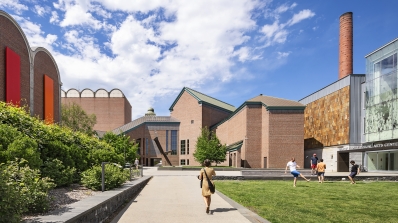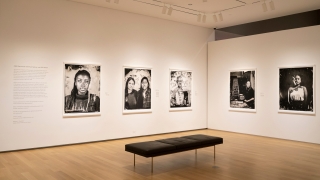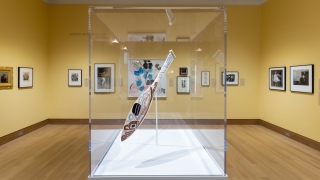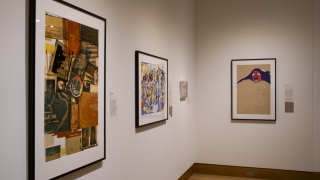Exhibitions Archive
Conceptualized by photographer Will Wilson, the collaborative project Critical Indigenous Photographic Exchange (CIPX) responds to the widely circulated ethnographic photography of Native Americans beginning at the turn of the twentieth century. During a ten-day residency at the museum, Kali Spitzer (Kaska Dena) and Will Wilson (Diné) will take tintype portraits of Dartmouth community members, then exhibit selected images.
Humor and the Human Body
The Butt of the Joke"The Butt of the Joke: Humor and the Human Body" aims to explore the reasons why we find certain depictions of the human body funny. Lighthearted and fun, it seeks to prompt both laughter and thoughtful contemplation regarding the ways in which we think about our bodies.
Institutional spaces have long privileged Euro-American narratives, which has had powerful, even dangerous consequences in our culture and society. Artists in Reconstitution foster the evolution of previously entrenched narratives as they remind us that we are all responsible agents in the complicated processes of writing current and future histories.
Experiencing trauma can change our biochemistry and behavior, producing a disease called PTSD. Contemporary neuroscience research suggests that through the making of art, individuals can recalibrate their biochemistry and cure their symptoms. "The Soul has Bandaged Moments" encourages three conversations: challenging the definition of trauma, exploring trauma as a physiological disease, and proposing different mechanisms of healing.
What happens when we assess a work of art as a historical document? When Art Intersects History examines works of American modern art that document the history of equality during the second half of the 20th century. This politically charged era reached a climax in the 1960s and 1970s with the confluence of the civil rights movement, women’s rights campaigns, the gay rights movement, and Vietnam War protests. All of this resistance was propelled by a mounting countercultural cry for equality and social justice. This exhibition considers how American artists have shared their perspectives on these galvanizing historic moments, and how their work still impacts us today.






